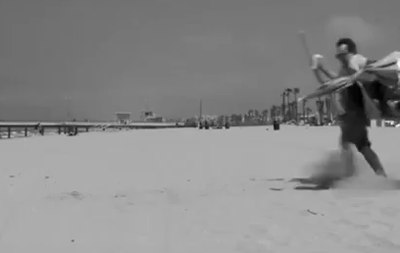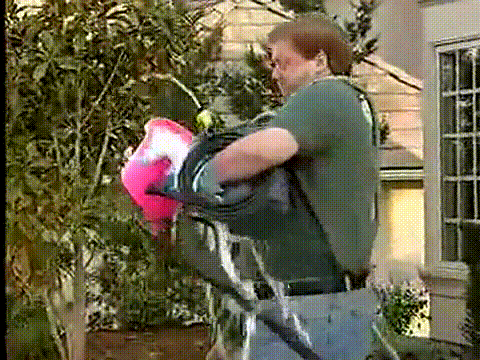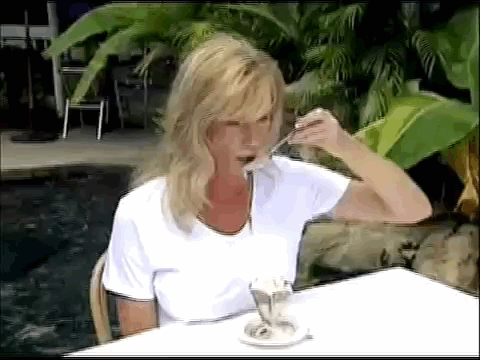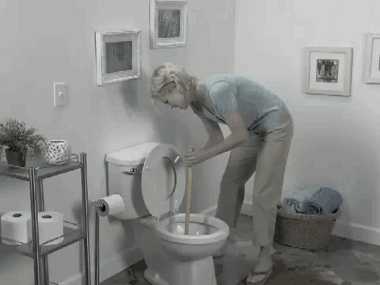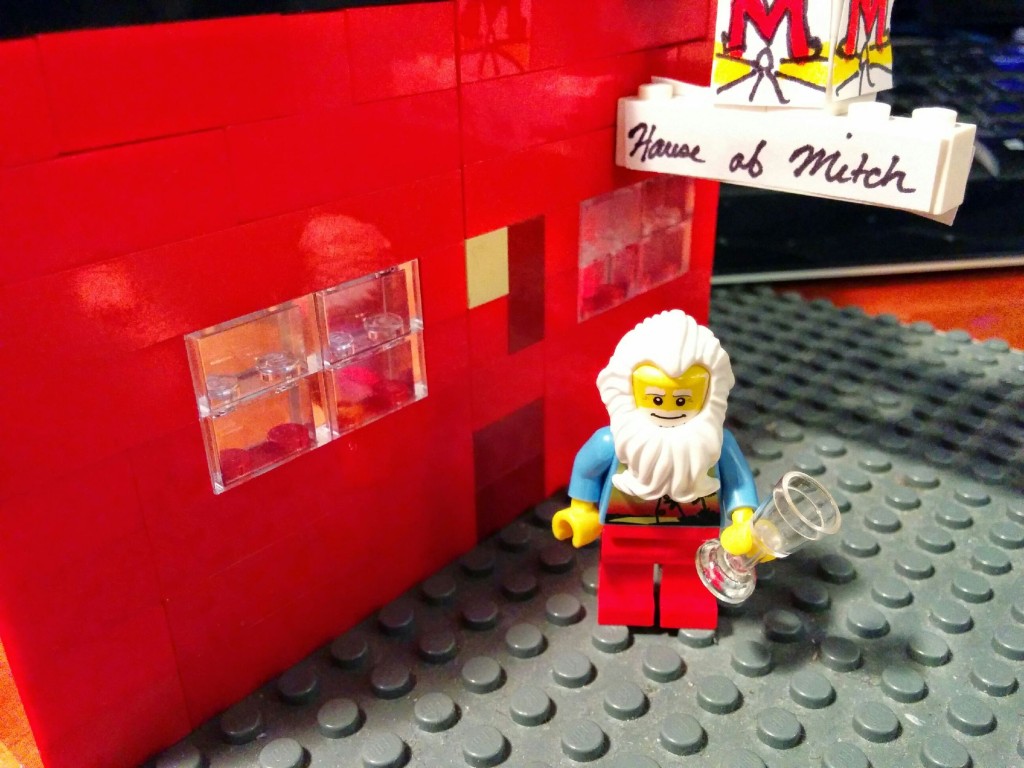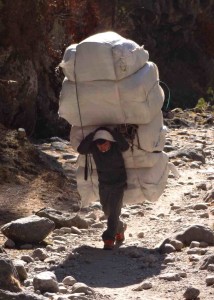Welcome back, here’s more people who clearly need to get their shit together.
Month: June 2015
A Short Post
First on today’s agenda: Police Chief Campanello’s opiod addiction program that began 6/1 saw its first participant, who came in at 3 AM Tuesday morning for help. And the “angel” assigned to stay with him until he could find a spot in a rehab program was one of our awesome readers and my coworker at Ocean Alliance, George Hackford! Heck yeah! George is amazing for doing this, plus when you’re going through this ordeal, who wouldn’t want a patient, polite British man to make conversation with? GO GEORGE!
Also, I’m gonna make this a short post tonight (maaybe because I was up late last night to go see Weird Al Yankovic don’t you judge me), but here’s the burning question your The Clam has:
What kind of float should we do for the Horribles Parade? We want your input. Because it has to happen and there are no excuses to not participate like we mean it. Jim keeps going on about a float being pulled by well-oiled loinclothed slaves, so please come up with a better idea than that.
I’m all ears.
No loincloths.
Lego People of Gloucester
A Pollen Advisory: Allergy Season Comes to Gloucester
It takes more than ordinary roadside flotsam to surprise or appall a resident of Gloucester. Around here, a clutch of empty nip bottles is as natural as a tuft of dandelions. Soiled briefs hanging from the neck of a fire hydrant are unlikely to prompt a second glance. Depending on how recently you’ve been strafed by a low-altitude flock, a decaying seagull might stir a twinge of pity—but it will hardly shock your sensibilities. And Gloucesterites accept that over time we will see, discarded in weedy patches of broken pavement, every single product from the incontinence and family planning departments of our local Walgreens.
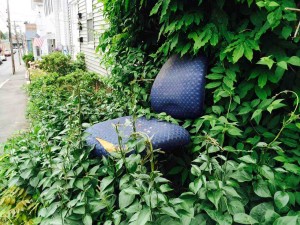 [Office space for rent, Elm St.]
[Office space for rent, Elm St.]
Thus, as a seasoned downtown pedestrian, I wasn’t expecting to be stopped in my tracks yesterday, while I walked along Prospect Street and gazed absently at the steeple of St. Ann’s. But suddenly the sidewalk beneath my feet went spongy, a disconcerting sensation for the wearer of dollar store flip-flops. What sprang to mind was a Friday evening at last year’s Fiesta, when I watched a bull terrier drift from an inattentive owner and scavenge most of a cheese pizza left on a row of bleachers. Scarcely a minute passed before the dog barked twice and vomited every last curd onto the paving stones. In the din and dim light, few noticed, and passersby blithely squelched through the muck. Now, here on Prospect, I figured a similar fate had befallen me. And frankly I would have preferred it to what I did confront: mustard-colored tree pollen, washed up in a tangled shoal of frightful dimensions. Immediately, I unleashed a thunderous sneeze.
For seasonal allergy sufferers like me, springtime doesn’t occasion the joy that it does for others. What it occasions is an annual trip to the pharmacy, where I make for the generic antihistamines like a Pamplonian bull. You might be only a grandmother lingering in the Hallmark section, picking out just the right Easter card for wee Tiffany. But if you stand between me and my 24-hour Wal-Fex, by God I will drop you like a sack of potatoes. This year my symptoms surfaced a little late, and I arrived to find the aisle gutted and my favored remedy out of stock. So I was forced to purchase brand-name Allegra, whose price per ounce rivals that of saffron, a spice derived from the stigmas of the Crocus plant, tweezed one at a time by raven-haired virgins.
More often than not, a careful pharmaceutical regimen is enough to keep my symptoms at bay. Some years, however, the pollen flies in stifling clouds, and I become a sloppy, wheezing mess. Back in the spring of 2011, I had trained aggressively for the Twin Lights Half Marathon, but as race weekend approached, disaster struck. Some godforsaken conifer must have enjoyed a particularly lusty reproductive cycle, because not even a stiff Benadryl-fexofenadine cocktail would release my lungs from hay fever’s vise. On Saturday, I took my last light training run down the Boulevard. Trotting along at 50% of race pace, I ended up doubled over a metal bench, coughing and gasping like a freshly landed trout. Desperate, I sought an emergency, off-label treatment that might at least allow me to finish 13.1 miles.
Sunday dawned cool and cloudy, ideal racing weather. Bolting from the lot at Good Harbor, I felt utterly weightless—and with steady, unencumbered breaths I cruised to Rockport and back a few minutes ahead of my goal. I crowed to all my friends, until one—a runner himself, as well as a neuro-ophthalmologist—explained that the medicine I’d used, Primatene Mist, is essentially pure adrenaline, a substance categorically banned by USA Track & Field and the governing bodies of every sport except bareknuckle boxing. “Tell me the truth,” he said. “How many puffs on the inhaler?”
“Two at breakfast,” I said. “Two more at the starting line.”
“Hmm. And I imagine you enjoyed your normal morning espresso?”
“Don’t be silly. I had a double.”
According to him, my record time was something of a disappointment—as this combination of stimulants had given me the lung capacity and pain threshold of a Nepalese Sherpa on Angel Dust.
As bad as seasonal allergies can be in New England—and don’t even get me started on fall ragweed—my symptoms were worse when I lived down South. The warm, moist climate of Houston, Texas, is conducive to the growth of every conceivable species of plant and fungus, and the lack of frost means that spores are a year-round menace. One option is to spend all your time inside, ringed by industrial HEPA filters. But that would deprive you of the city’s open-air charms, such as the orange glow of its oil refineries at night, or the tar balls that bob and beach themselves along its waterways like malignant jellyfish.
One fall I bought tickets to the Austin City Limits Music Festival, the famed outdoor concert staged in dusty Zilker Park. Within minutes of passing through the gates, I sneezed for the first time. An hour later, I’d peeled off my cotton t-shirt for use as a soft, absorbent nasal dam. I was sneezing more or less continually, sometimes in bursts of ten or twelve, leaving me unable to eat, drink, or speak more than a few staccato words: “Goddamn. Choo! It.” Moreover, my eyes were sealed behind hot, itchy puckers, obliging my friends to lead me by the wrist through crowds that turned to see what the fuck was up with the shirtless, sneezing guy. I became something of a circus sideshow, passable entertainment during the intermissions between Spoon, Andrew Bird, and My Morning Jacket. I didn’t want to leave. The tickets were expensive, and my ears still worked fine. But as the evening wore on, I feared that the constant clearing of my nose might result in my becoming the first recorded death by self-inflicted dehydration.
As a kid growing up in Virginia, my allergies were equally bad. Or perhaps it’s just that I lacked the discipline to abstain from tumbling headlong down grassy hillsides, playing in leaf litter, and adorning myself with brittle pollen wreaths and bangles. Following an afternoon of such recreation, I’d spend the next few days in bed with a cool washcloth over my eyes, sucking on a nebulizer, while my friends continued their frolics. It outraged me that I could be enfeebled by something as harmless as a plant—that it was, in fact, my own oversensitive immune system that was primarily to blame. People would sometimes listen to my pitiful sneezes and chirp, “I bet you’ll grow out of those allergies!” Those people were dirty sons of bitches.
But today I have a different mindset. No longer do I shake my fist at the red oak or box elder. And I’m more judicious when it comes to exposing myself to the worst seasonal triggers. Most of all, I simply accept that allergies are a part of living close to nature, especially nature that’s pretty enough to spend whole lazy days within. Because, ultimately, this is the main reason I left the South for the North Shore, where around every bend in the road is a scene of unspeakable beauty. Where, like a mole on a model’s cheek, an abandoned commode only enhances the overall effect.
Sir David Attenborough Comes to Rockport
We at The Clam managed to get our hands on an advanced copy of Sir David Attenborough’s observations on Rockport’s annual great migration, set to air on PBS this fall.

You are now reading this in my voice.
Late spring into early summer is a magical time along the New England coast. By now the ravages of winter have melted away, leaving the freezing temperatures and oppressive snow a distant memory for the year-round residents of the rugged coast.
In the coastal Hamlet of Rockport, the arrival of warm weather is marked by one of nature’s lesser known but equally impressive great migrations; the annual return of the sailboats which flock to the tiny harbor.
Space in these protective waters is limited and competition for a spot is great, especially within the prestigious main harbor. Often, space is only made available when one of the venerable occupants succumbs to his or her age, leaving a precious vacuum to be rapidly filled by the next in line on the notoriously slow moving waiting list.

Sparring does happen on occasion, with the combatants gathering in a circle. These battles are usually for show, rarely ending in serious injury or death.
The summer is here is short, and the occupants of these magnificent boats waste no time in displaying their plumage, both to impress each other, as well as to call attention from inhabitants onshore. Freshly painted hulls, shining chrome and brass accents, and clean sails which gleam in the sunlight are all on proud display.
The males of the bunch will regularly gather onshore at the Yacht Club, keenly inspecting each other in order to establish a hierarchy. While biologists aren’t certain, they believe that the style of Sperry Topsider footwear denotes their status within the pack.

He marks his territory by the brash display of the pale inner thigh, warning other males who may be nearby.
The females of the group routinely meet to discuss the males, chattering excitedly to each other over mimosas as they admire the showy males and measure up the size of their masts.
July 4th weekend is the height of the mating season, and the harbor becomes a jumble of dancing masts, with the cacophony of clanging rigging and clinking glasses filling the air. Soon, however, these waters will empty once more as the boats one by one return to their wintering grounds, leaving behind the promise of next season’s migration.



